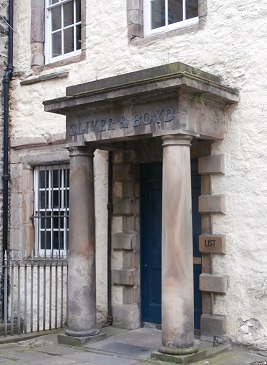 In the 19th century the Scotland became an important centre for book printing, and at one time Scotland’s book printers were so active in the export business, that Scotland claimed the title of ‘printer to the world’. Nationally and internationally significant contributions to the book trade were made by Scottish book printers and publishers such as Edward Raban of Aberdeen in the seventeenth century, the Foulis brothers in eighteenth century Glasgow, William Smellie (printer of the first Encyclopaedia Britannica) and the Morison family in Perth in the late eighteenth century, and firms such as A & C Black, Blackie, James Ballantyne, Oliver & Boyd, R & R Clark, T & A Constable, Thomas Nelsons, W & R Chambers, and William Collins.
In the 19th century the Scotland became an important centre for book printing, and at one time Scotland’s book printers were so active in the export business, that Scotland claimed the title of ‘printer to the world’. Nationally and internationally significant contributions to the book trade were made by Scottish book printers and publishers such as Edward Raban of Aberdeen in the seventeenth century, the Foulis brothers in eighteenth century Glasgow, William Smellie (printer of the first Encyclopaedia Britannica) and the Morison family in Perth in the late eighteenth century, and firms such as A & C Black, Blackie, James Ballantyne, Oliver & Boyd, R & R Clark, T & A Constable, Thomas Nelsons, W & R Chambers, and William Collins.
The first newspaper printed in Scotland appeared in the middle of the seventeenth century. The Edinburgh Gazette was first issued in 1680 and other titles began to appear in the early eighteenth century, such as the Edinburgh Courant in 1705. The news in early Scottish newspapers was mainly reprinted from London newspapers, even though this news was days old by the time it reached Scotland. Local news was hardly reported at all. Newspapers were small and relatively expensive, so had a small circulation. At this time paper was heavily taxed, as were advertisements which occupied about half the space.
As printing presses were set up throughout Scotland, local newspapers became more common and by the end of the nineteenth century, most Scottish towns of any size had their own local weekly.
Early newspapers were printed on the hand-press which was a laborious process, limiting the number of copies that could be printed. Friedrich König developed a double cylinder press for use at The Times in 1814 (one cylinder rotating while the forme moved forwards, the other when it was moving backwards): this version could achieve speeds of 1100 sheets an hour. The forme was held on the flat bed of the press and moved forwards and backwards against the sheet of paper wrapped around a cylinder. The cylinder rotated over the forme as it moved forwards but was lifted away as it moved back so that the sheet of paper could be changed. This type of press is known as a ‘stop-cylinder’ press, and could achieve speeds of 800 sheets per hour. Such presses also demanded improvements in the systems used for inking with robust inking rollers and a system of pumps and rollers to distribute ink evenly onto the rollers that applied the ink to the forme. König also invented an early perfecting machine: this enabled two formes of type, representing the two sides of the finished sheet of paper within the same operation. As the sheets and later webs or rolls of paper did not have time to dry between printing operations, further developments in ink and inking systems were needed to prevent set off (unwanted transfer of ink to paper).
 SPRAT is grateful for support from The Watson Foundation
SPRAT is grateful for support from The Watson Foundation